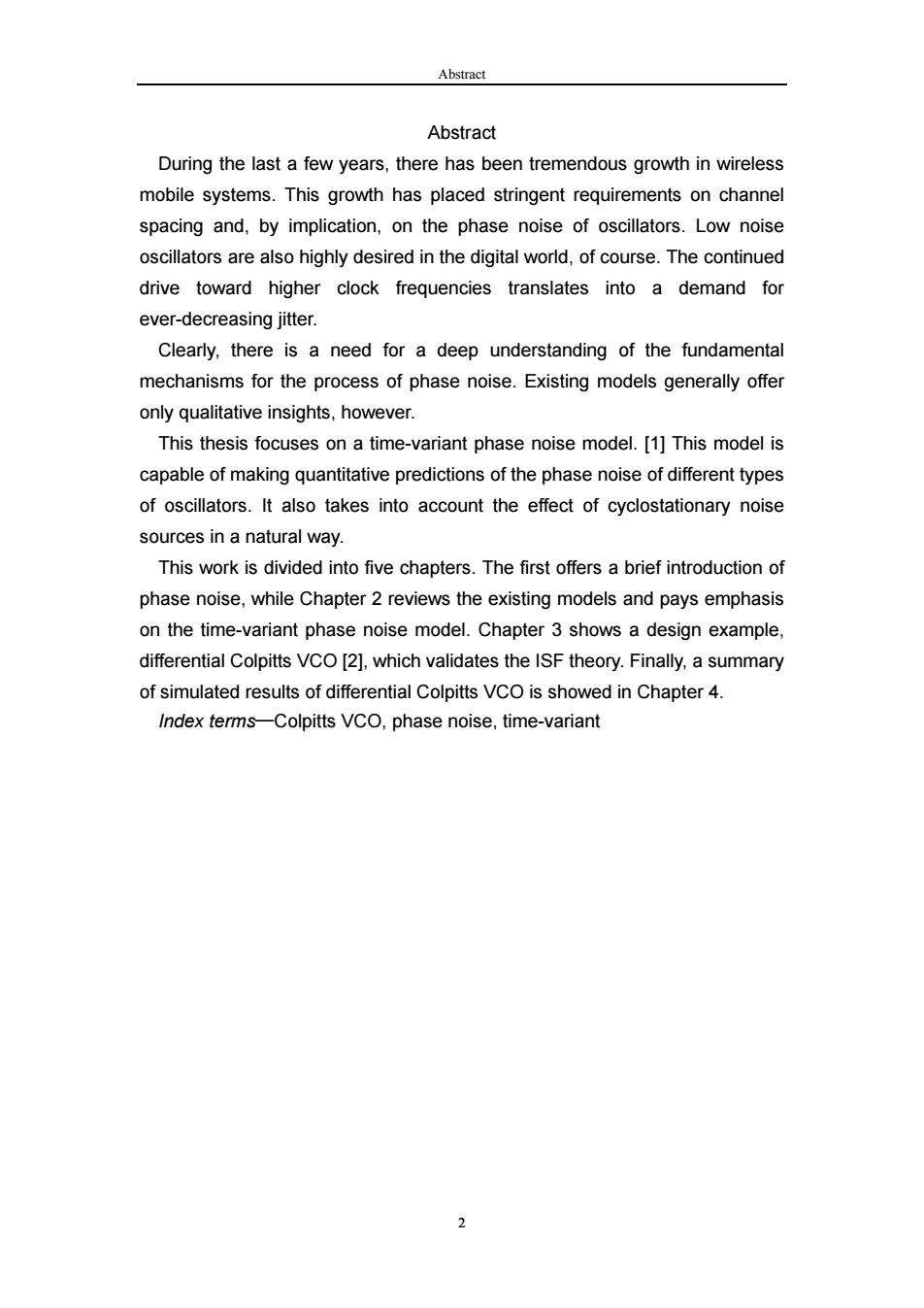正在加载图片...

Abstract Abstract During the last a few years,there has been tremendous growth in wireless mobile systems.This growth has placed stringent requirements on channel spacing and,by implication,on the phase noise of oscillators.Low noise oscillators are also highly desired in the digital world,of course.The continued drive toward higher clock frequencies translates into a demand for ever-decreasing jitter. Clearly,there is a need for a deep understanding of the fundamental mechanisms for the process of phase noise.Existing models generally offer only qualitative insights,however. This thesis focuses on a time-variant phase noise model.[1]This model is capable of making quantitative predictions of the phase noise of different types of oscillators.It also takes into account the effect of cyclostationary noise sources in a natural way. This work is divided into five chapters.The first offers a brief introduction of phase noise,while Chapter 2 reviews the existing models and pays emphasis on the time-variant phase noise model.Chapter 3 shows a design example, differential Colpitts VCO [2],which validates the ISF theory.Finally,a summary of simulated results of differential Colpitts VCO is showed in Chapter 4. Index terms-Colpitts VCO,phase noise,time-variant 2Abstract 2 Abstract During the last a few years, there has been tremendous growth in wireless mobile systems. This growth has placed stringent requirements on channel spacing and, by implication, on the phase noise of oscillators. Low noise oscillators are also highly desired in the digital world, of course. The continued drive toward higher clock frequencies translates into a demand for ever-decreasing jitter. Clearly, there is a need for a deep understanding of the fundamental mechanisms for the process of phase noise. Existing models generally offer only qualitative insights, however. This thesis focuses on a time-variant phase noise model. [1] This model is capable of making quantitative predictions of the phase noise of different types of oscillators. It also takes into account the effect of cyclostationary noise sources in a natural way. This work is divided into five chapters. The first offers a brief introduction of phase noise, while Chapter 2 reviews the existing models and pays emphasis on the time-variant phase noise model. Chapter 3 shows a design example, differential Colpitts VCO [2], which validates the ISF theory. Finally, a summary of simulated results of differential Colpitts VCO is showed in Chapter 4. Index terms—Colpitts VCO, phase noise, time-variant